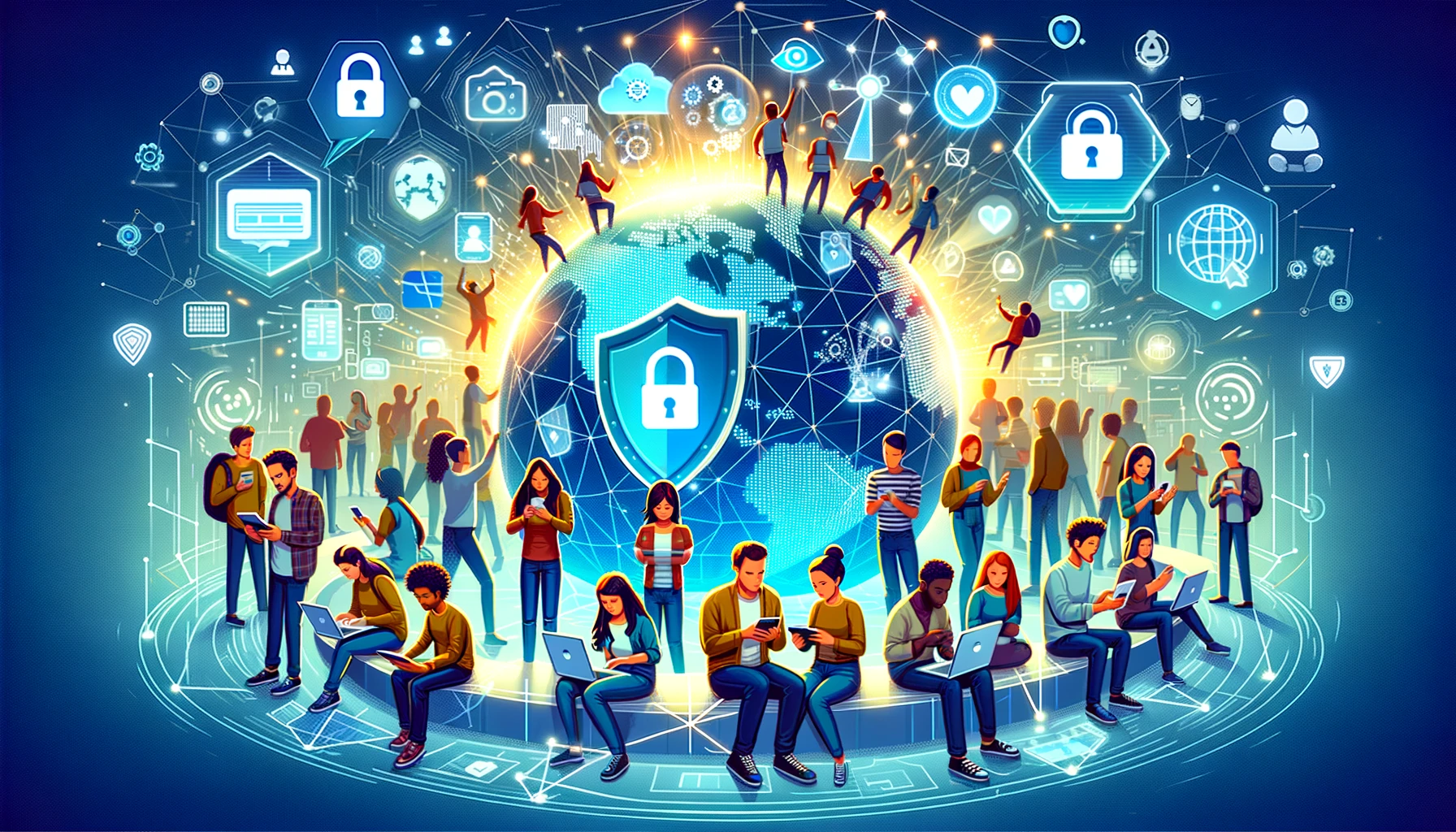The digital age has revolutionized the way we communicate, work, and access information. With the vast opportunities and conveniences offered by the internet, it’s crucial to recognize and address the risks associated with online activities. Safer Internet Day serves as a timely reminder of the importance of fostering a secure online environment for everyone.
Understanding the Significance of Safer Internet Day

1. Importance of Online Safety
In today’s interconnected world, online safety is paramount. Individuals of all ages, from children to adults, are exposed to various online threats, ranging from cyberbullying to identity theft. Safer Internet Day aims to raise awareness about these risks and promote safer online practices.
2. History and Background of Safer Internet Day
Safer Internet Day, celebrated annually on the second Tuesday of February, originated as an initiative by the European Union in 2004. Since then, it has grown into a global event, engaging millions of people worldwide in discussions and activities centered around online safety.
Risks and Challenges on the Internet
The internet, while a powerful tool for communication and learning, also presents several challenges and risks.
1. Cyberbullying and Harassment
Cyberbullying remains a prevalent issue, particularly among young internet users. Harassment and intimidation through social media platforms and online forums can have serious consequences on mental health and well-being.
2. Identity Theft and Fraud
Identity theft continues to pose a significant threat in the digital landscape. Malicious actors exploit vulnerabilities in security systems to steal personal information, leading to financial loss and reputational damage.
3. Privacy Concerns
Privacy breaches and data misuse are widespread concerns in the digital age. Users often unwittingly share sensitive information online, making them susceptible to surveillance and exploitation by third parties.
Tips for Safer Internet Usage
To mitigate the risks associated with online activities, it’s essential to adopt proactive measures for safeguarding personal information and privacy.
1. Strong Password Creation
Creating complex and unique passwords for online accounts is the first line of defense against unauthorized access. Password managers can help generate and store secure passwords across multiple platforms.
2. Two-Factor Authentication
Enabling two-factor authentication adds an extra layer of security to accounts by requiring additional verification beyond passwords. This can prevent unauthorized access even if passwords are compromised.
3. Privacy Settings Management
Reviewing and adjusting privacy settings on social media platforms and digital devices can limit the amount of personal information exposed to the public. Regularly updating privacy preferences enhances control over online visibility and data sharing.
Educating Children and Teens about Internet Safety
Ensuring the online safety of young users requires proactive education and parental guidance.
1. Online Safety Education in Schools
Integrating internet safety lessons into school curricula empowers students with the knowledge and skills to navigate online spaces responsibly. Educators play a pivotal role in teaching digital citizenship and promoting ethical online behavior.
2. Parental Controls and Supervision
Parents and guardians can implement parental control features on devices and internet routers to restrict access to inappropriate content and monitor online activities. Open communication and supervision foster trust and accountability between children and caregivers.
Building a Positive Online Community
Creating a safe and inclusive online environment relies on collective efforts to promote empathy, respect, and digital civility.
1. Promoting Kindness and Respect Online
Encouraging positive interactions and constructive dialogue cultivates a culture of mutual respect and empathy. Emphasizing the human aspect of online communication fosters meaningful connections and reduces the prevalence of cyberbullying and trolling.
2. Reporting and Addressing Cyberbullying
Empowering users to report instances of cyberbullying and harassment facilitates swift intervention and support mechanisms. Online platforms and service providers have a responsibility to address abusive behavior and enforce community guidelines effectively.
Resources for Safer Internet Practices
Numerous resources and tools are available to support individuals and organizations in enhancing their online safety practices.
1. Trusted Websites and Organizations
Platforms such as StaySafeOnline.org and the National Cyber Security Centre offer comprehensive guidance and resources on cybersecurity best practices and threat mitigation strategies. Accessible information empowers users to make informed decisions about their online security.
2. Safety Tools and Software
Antivirus software, firewalls, and virtual private networks (VPNs) are essential tools for protecting devices and networks from malicious threats. Regular software updates and security patches help fortify defenses against evolving cyber threats.
Conclusion
Safer Internet Day serves as a reminder of the shared responsibility to create a safer and more secure online environment. By raising awareness, fostering education, and promoting positive digital citizenship, we can empower individuals and communities to navigate the digital landscape with confidence and resilience.
As we strive for a safer internet, it’s essential to leverage innovative technologies and solutions. AIM Technologies offers cutting-edge tools and resources to enhance your online security posture. Request a demo today to discover how our solutions can safeguard your digital presence and protect against emerging threats.
FAQs
What is the purpose of Safer Internet Day?
- Safer Internet Day aims to raise awareness about online safety issues and promote positive digital behavior worldwide.
How can I protect my personal information online?
- Utilize strong passwords, enable two-factor authentication, and review privacy settings regularly to safeguard personal information from unauthorized access.
Why is cyberbullying a concern on the internet?
- Cyberbullying can have detrimental effects on mental health and well-being, highlighting the importance of promoting kindness and respect online.
Where can I find resources for online safety education?
- Trusted websites and organizations such as StaySafeOnline.org provide valuable resources and guidance on cybersecurity best practices.
What role do parents play in ensuring children’s online safety?
- Parents play a crucial role in educating children about internet safety, implementing parental controls, and fostering open communication about online experiences.




